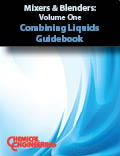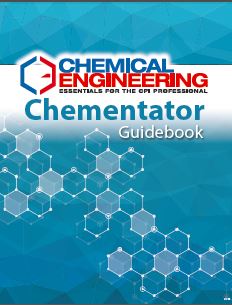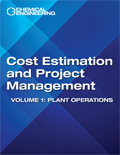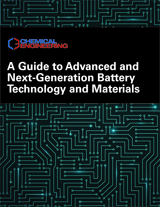Description
Volume one of this two-part series focuses on mixing and blending liquid ingredients.
These tutorial-style articles provide proven engineering recommendations for dealing with commonly encountered mixing challenges. There is emphasis on choosing the best type of mixer, sizing the equipment properly, and minimizing scaleup issues. Highlighted is how impeller design impacts mixer performance and the benefits that come from testing a mixing scenario before purchasing the system.
Guidance is provided for dealing with engineering challenges ranging from producing emulsions and carrying out high-shear mixing, to specifying and maintaining agitated reactors, selecting and sizing static mixers, and managing gas-liquid mixing.
All practical, how-to articles were originally published in Chemical Engineering and include several classic, hard-to-find engineering articles.
128 pages, delivered in a PDF.
Table of Contents
- Facts at Your Fingertips: Gas-Liquid Mixing: Physical Considerations
- Facts at Your Fingertips: Gas Sparging
- Mixing Systems: Design and Scale Up – Many options are available to meet the mixing challenges confronted by the CPI. Both theoretical and empirical methods can help the engineer to fit the right system to the task
- Ten Things You May Not Know About Liquid Mixing Scaleup – Close attention to these aspects of scaleup can ensure greater success
- How Fluid Properties Affect Mixer & Impeller Design – One relatively new impeller design — the counterflow impeller— offers some advantages, particularly for the mixing of non-Newtonian fluids
- The Unexpected Rewards of Testing a Mixer – For custom mixers and blenders, verification is only one benefit. Testing can open the door to further improvement
- Mix or Match: Choose the Best Mixers Every Time
- Mixer Specification a la Spreadsheet – Try this spreadsheet’s logic to simplify and speed up mixer specification
- Facing the Challenge of Mixing Problem Fluids – Understanding the capabilities and limitations of different types of mixers is the key to solving difficult problems
- Making Emulsions -Vacuum processors give cosmetics and pharmaceuticals the smooth treatment
- Mechanical Design Aspects for High-Performance Agitated Reactors – An understanding of the mechanical design helps in specifying, maintaining and revamping agitated reactor systems
- From Batch to Continuous Processing – Continuous flow reactors can provide many benefits over batch processes. This article answers why and how
- CSTRs: Bound for Maximum Conversion – Here, a design approach for continuous stirred-tank reactors is outlined for both reversible and irreversible second-order reactions
- Don’t Be Baffled – How to select and size the correct static mixer
- High-Shear Mixing– Don’t Fall Victim to Common Misconceptions
- Viscosity: The Basics – An important concept, sometimes forgotten, is that viscosity is not a single-point measurement
- Mechanical Design Aspects for High-Performance Agitated Reactors– An understanding of the mechanical design helps in specifying, maintaining and revamping agitated reactor systems
- Increase Productivity Through Better Gas-Liquid Mixing– The trend towards larger reactors has increased the demand on agitator systems. Developments in gas-liquid mixing technology can help meet these demands
- Millichannel Reactors: A Practical Middle Ground for Production– Reactors with millimeter-scale dimensions provide mixing, heat transfer and other advantages over devices with larger dimensions, and increased robustness compared to microdevices. Here are tips to consider for using them
- Lifecycle Costs for Capital Equipment In the CPI
FOR YOUR EYES ONLY: Please do not forward the PDF file. It’s against the law to copy, fax, or electronically transmit the newsletter without our permission. For questions please email [email protected].
For group subscription information and discount pricing, contact Sarah Garwood at [email protected].




